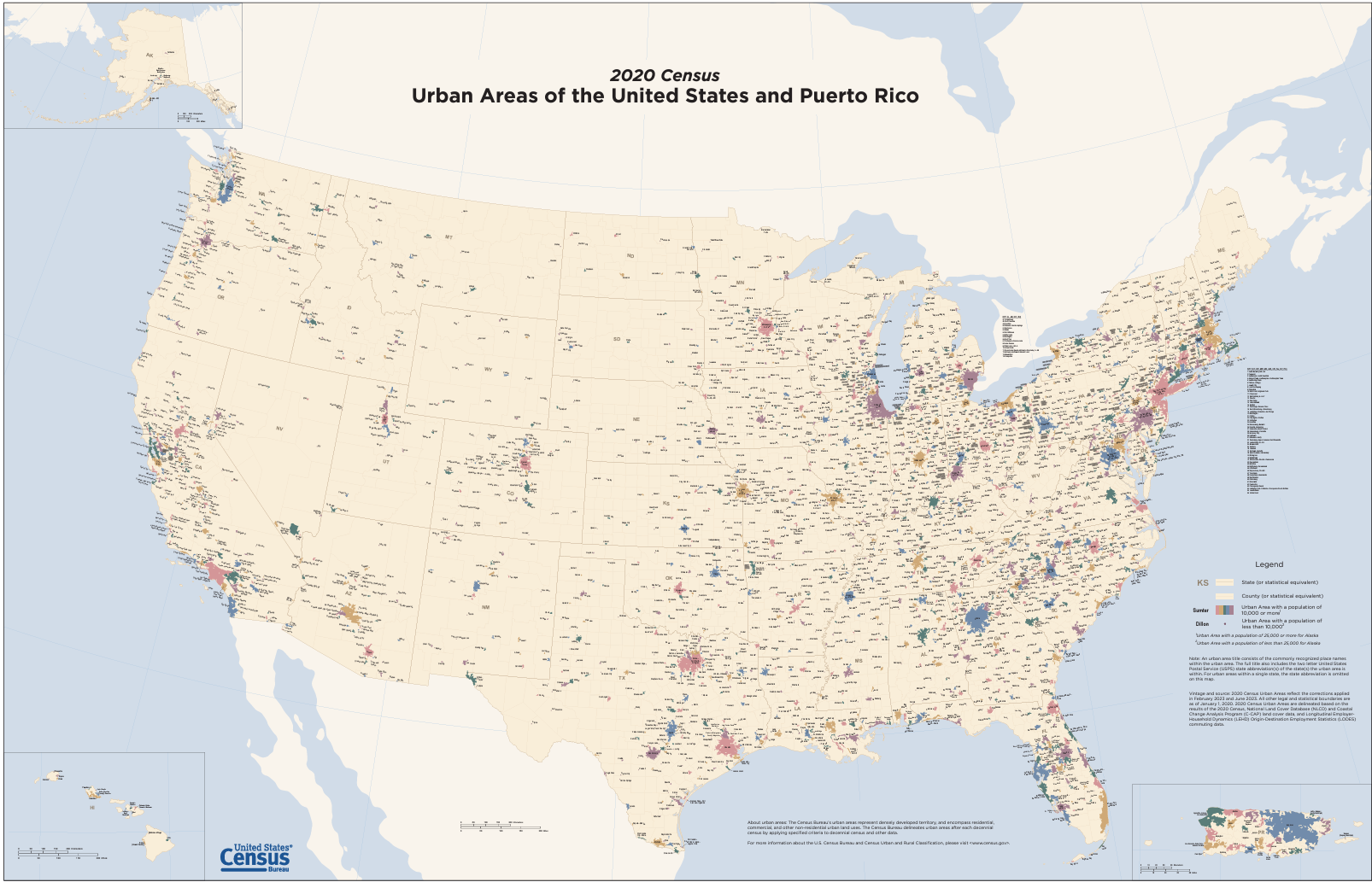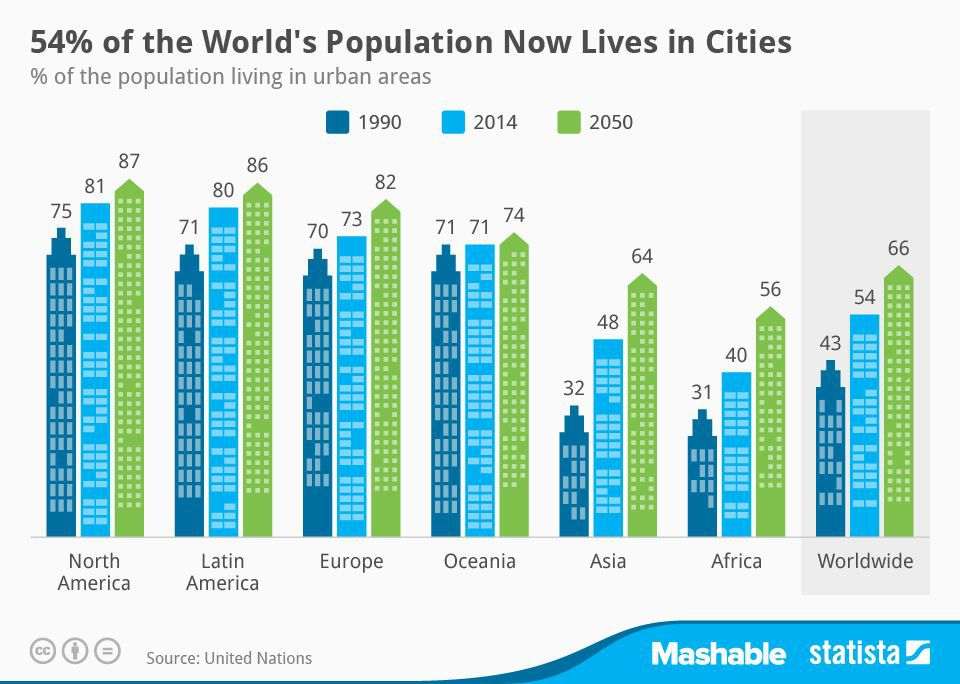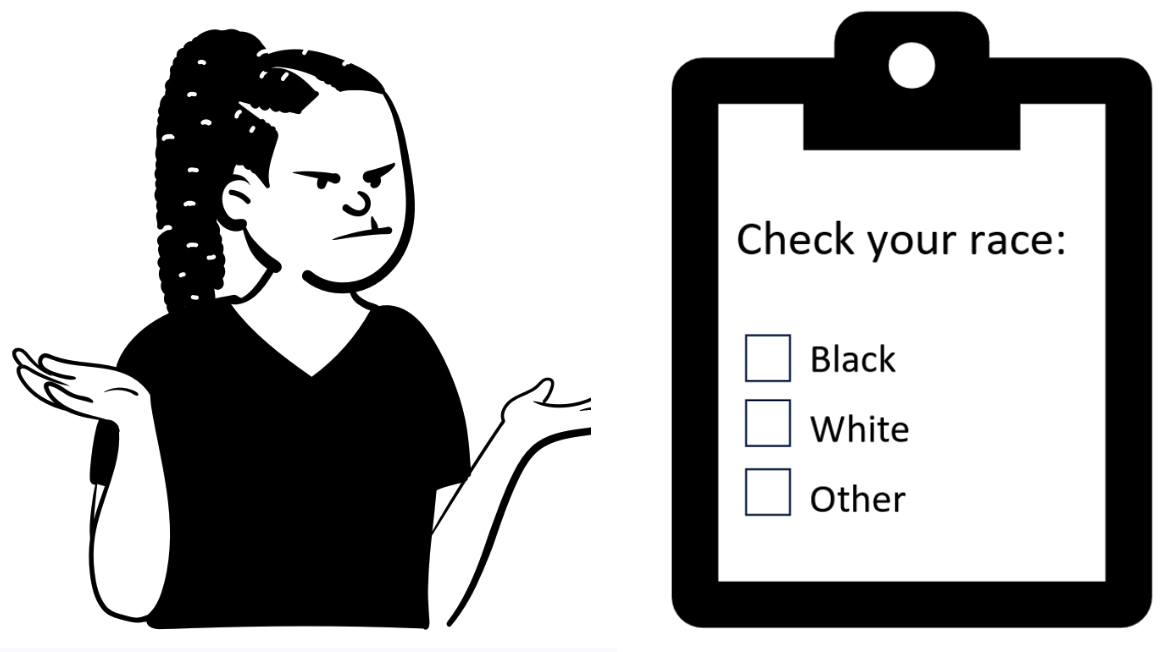6.2 What Is “Rural?”
When you read or hear the word rural, what comes to mind? Images of green rolling hills? Pigs, cows, and horses? Guns and hunting? A simple and calm life? Most of us probably have an idea in our minds about what a rural space is, especially how it compares to an urban space. But as you drive down the highway, where does that urban place stop and the rural place begin? This question is not easy to answer.
Rurality can be subjective, and different definitions might be best suited to different needs. In simplest terms, rural describes non-urban spaces with lower populations and lots of undeveloped land. In the United States, government agencies – such as the Office of Management and Budget – provide some practical definitions of urban and rural to delineate jurisdictions and boundaries for purposes such as taxes or funding. The U.S. Census Bureau has spent a great deal of time distinguishing and categorizing urban spaces, with the leftover locations simply becoming rural. Official government definitions of rural consider location characteristics such as population, population density, land use, distance, and number of residences. Although all of these definitions have measurement issues or problems with overlap, they can help give us a picture of rural life.
According to the U.S. Census Bureau, approximately 66 million people, or 20 percent of the population, live in rural areas in the United States (USCB, 2023). Some states have higher numbers or percentages of people living in rural areas. For example, 65 percent of Vermont’s population lives in rural areas, and Texas has nearly 5 million rural residents. Even though 80 percent of the population lives in urban areas, those urban areas only make up about 3 percent of the country’s land area (USCB, 2023). That means there are a lot of rural places in the United States! The land availability in rural areas contributes to the predominance of industries such as agriculture, mining, and manufacturing. Figure 6.2 shows a general depiction of rural versus urban areas in the United States.

Why Are We Talking About Rural Spaces?
You may be wondering if or why the distinction between rural and urban matters, especially in a book about race and crime. The why becomes apparent when we look at features and patterns in non-urban spaces. Rural communities can provide both benefits and challenges to the people living there. Many rural residents discuss the appeal of their communities by pointing out the space, pace, and beauty; these translate to lower population density and more undeveloped land, less traffic and busy business districts, and landscapes with recreation opportunities. However, these locations also tend to have fewer educational and career opportunities, are geographically remote or isolated, lack public transportation and welfare services, and suffer from fewer overall resources. The social connectedness of rural areas in which everyone knows each other – also referred to as density of acquaintanceship – can also be beneficial or detrimental to community members. Gossip and shame are powerful tools for maintaining control and order in a tight-knit community, but the inability to remain anonymous can make it difficult to maintain professional boundaries; for example, it might be awkward if your doctor goes to your church and plays on your local soccer team.
Additionally, criminal justice system agencies in rural communities suffer from a lack of funding and resources, understaffing, and all the challenges brought on by geographic isolation. A local law enforcement agency may only have a few officers working throughout a county, increasing the amount of time it takes them to respond to calls for help. Their lack of quality equipment, such as body cameras, may decrease the quality of evidence they are able to capture, and the agency may not have the digital storage capabilities needed to preserve the footage for extended periods of time. If you were arrested, the severe lawyer shortage in rural communities could impact your access to counsel and increase the chance that you remain in jail while awaiting your trial. The prison boom in rural and small-town communities means you’ll most likely have a place to be incarcerated, but reentry services are few and far between. All of these disadvantages in rural areas and rural justice agencies are especially challenging for already marginalized populations in these communities.
Before we dive into these issues, let’s first look at how geography, settlement patterns, and colonization have impacted rural community establishment and growth. Nature’s offerings, such as rivers, lakes, and fertile soil, attract people and support agriculture, water transportation, and flourishing life. When you look at early settlement patterns in the United States, colonies developed where immigrants arrived and where people started moving westward (Dorrell et al., 2019). As industrialization and urbanization erupted, people moved from the rural areas into cities for job opportunities. In our modern society, many agricultural industries that were once the economic saviors of rural communities have crumbled or drastically changed.
Laws that disadvantage or disproportionately target marginalized populations, paired with the social and economic structure of rural areas, have left footprints in these communities. For example, even after segregation was legally outlawed, many small communities maintained segregated residential areas through informal enforcement of those cultural norms. Some remote areas became settlements for Black Americans who were formerly enslaved. If you are interested in an example of this in Texas, see the article “Wynne Community’s Founder” in the Chapter Resources.
Rapid urbanization is a worldwide “demographic mega-trend” (UNDESA, 2019) as populations grow and people leave rural areas to move to cities and metropolitan areas. It is estimated that over 65 percent of the globe’s population will live in urban areas by 2050, see figure 6.3 for a profile of urban living in different regions of the world (USCB, 2022; UNDESA, 2019). Not only does this phenomenon create challenges for city development and sustainability, but it can further disadvantage rural residents who are left behind.

Underrepresentation of Rural People of Color and Places
Rural people and places are historically underrepresented in research and policy. This focus on urban spaces as the normal and default locations of interest and attention situates our society as largely urbanormative. For racially and ethnically marginalized groups in these communities, this is especially true.
Historically, rural areas have been synonymous with white. The perceived racial binary between rural and urban places was recently most prominent during the 2016 election, and many news stories pointed out the heavy concentration of white Trump supporters in rural America. Although there is truth to this, portrayals of rural America as white-only have led to the misunderstanding and erasure of communities of color in these areas. Rural America has become increasingly diverse over the past decade, and as of 2020, about a quarter of all rural residents are people of color. Many rural counties, especially in the Southern and Western regions of the United States, are racially and ethnically diverse, with some being majority or near-majority people of color (Rowlands and Love, 2021; see figure 6.4). The media has played a major role in creating the white-only narrative about rural America.

Activity: Measurement History and Challenges
Not only are definitions of rural areas unclear and incomplete, but U.S. Census Bureau data on race and ethnicity share similar challenges. For example, the first census included race-based categories that included “slaves,” “free white females and males,” and “all other free persons.”
To learn more about the issues with racial and ethnic categories in our census data, especially how these impact our understanding of race and ethnicity in rural communities, see Part II of the Rural Aperture Project on the Center on Rural Innovation’s website, titled “Who Lives in Rural America? The Geography of Rural Race and Ethnicity” [Website]. How might these measurement issues impact our understanding of rural communities and who lives there?

Check Your Knowledge
Licenses and Attributions for What Is “Rural?”
Open Content, Original
“What is ‘Rural?’” by Jessica René Peterson is licensed under CC BY 4.0.
Figure 6.5, right. Checklist by Jessica René Peterson is licensed under CC BY 4.0.
Open Content, Shared Previously
Figure 6.2. The urban areas map by the U.S. Census Bureau is in the Public Domain.
Figure 6.3. “54% of the world’s population now lives in cities” by Statista licensed under CC BY-ND 4.0. Data from the United Nations.
Figure 6.5, left. “Girl with attitude icon” is in the Public Domain, CC0 1.0.
All Rights Reserved
Figure 6.4. “Rural Americans of color in 2020” © Metropolitan Policy Program at Brookings is included under fair use. Data source: 2020 U.S. Census.
simply put, non-urban spaces with lower populations and lots of undeveloped land
to rely on judgments - rather than external facts - driven by personal feelings and opinions
a category of people grouped because they share inherited physical characteristics that are identifiable, such as skin color, hair texture, facial features, and stature
refers to the social connectedness of rural areas in which everyone knows each other
movement of people from rural settings to cities and metropolitan areas that results in the growth of urban places
a group of people living in a defined geographic area that has a common culture
the treatment of urban spaces as the normal and default locations of societal, research, and policy interest and attention
shared social, cultural, and historical experiences of people from common national or regional backgrounds that make subgroups of a population different

